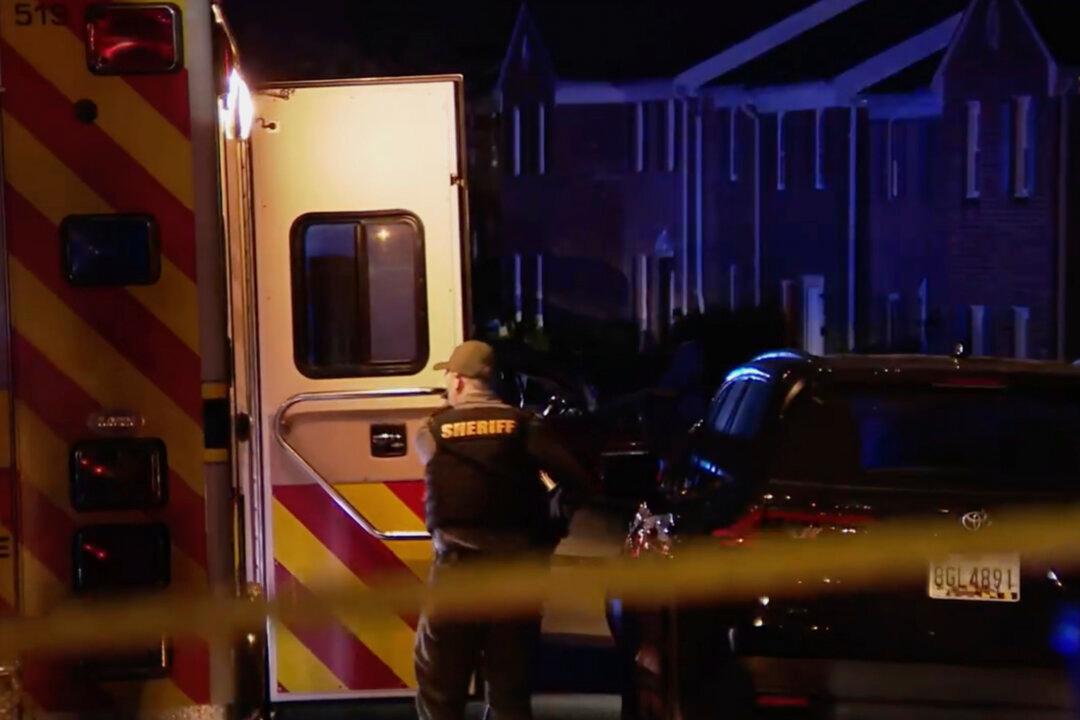TRAVIS AIR FORCE BASE, Calif.—More than 300 American cruise ship passengers, including 14 who tested positive for COVID-19, are undergoing quarantine at military bases in California and Texas on Feb. 17 after arriving from Japan on charter flights overnight.
A ground crew in anti-contamination suits met the chartered jet, which touched down at Joint Base San Antonio, in Texas, and passengers could be seen climbing down the stairs wearing face masks in the pre-dawn mist. Another flight landed at Travis Air Force Base in California hours earlier. The passengers will remain in quarantine at the bases for two weeks.
Japan’s Defense Minister Taro Kono wrote earlier in a tweet that Japanese troops helped transport 340 U.S. passengers on 14 buses from Yokohama port to Tokyo’s Haneda airport. About 380 Americans were on the cruise ship.
The U.S. said it arranged for the evacuation because people on the Diamond Princess were at a high risk of exposure to the new virus that’s been spreading in Asia. For the departing Americans, the evacuation cuts short a 14-day quarantine that began aboard the cruise ship Feb. 3.
The State Department announced later that 14 of the evacuees received confirmation they had the virus but were allowed to board the flight because they had no symptoms. They were being kept isolated from other passengers on the flight, the U.S. State and Health and Human Services said in a joint statement.
Dr. Anthony Fauci, director of the National Institute of Allergy and Infectious Diseases at the National Institutes of Health, said on Feb. 16 that an infected person who shows minimal symptoms could still pass the virus to someone else.
It’s unclear which base the 14 who tested positive for the virus went to.
Officials said the evacuees who arrived at Travis Air Force Base will be housed at a different location from the more than 200 other Americans who were already being quarantined on the base, in a hotel. Those people have been at the base since early February, when they arrived on flights from China.
No Travis airmen will have contact with the passengers, officials said.
About half of all known cases of the virus outside China have been found aboard the Diamond Princess. About half of the 3,700 passengers and crew are Japanese.
Now that they’re in the United States, the cruise ship passengers must go through another 14 days of quarantine at the military facilities—meaning they will have been under quarantine for a total of nearly four weeks.
Australia, Canada, Hong Kong and Italy have been planning similar flights of passengers. Other governments, including Canada and Hong Kong, also will require the passengers to undergo a second 14-day quarantine.
Japan on Feb. 17 announced another 99 infections on the Diamond Princess, raising the ship’s total number of cases to 454. Overall, Japan has 419 confirmed cases of the virus, including one death. The United States has confirmed 15 cases within the country in addition to the 14 who just arrived. Separately, at least one U.S. citizen died in China.
Americans Cheryl and Paul Molesky, a couple from Syracuse, New York, opted to trade one coronavirus quarantine for another, leaving the cruise ship to fly back to the United States. Cheryl Molesky said the rising number of patients on the ship factored into the decision.
“We are glad to be going home,” Cheryl Molesky earlier told NHK TV in Japan. “It’s just a little bit disappointing that we’ll have to go through quarantine again, and we will probably not be as comfortable as the Diamond Princess, possibly.”
She sent The Associated Press a video of her and her husband boarding the plane with other Americans.
“Well, we’re exhausted, but we’re on the plane and that’s a good feeling. Pretty miserable wearing these masks though, and everybody had to go to the bathroom on the bus,” she said.
Some American passengers said they would pass up the opportunity to fly to the United States because of the additional quarantine. There also was worry about being on a long flight with other passengers who may be infected or in an incubation period.
One of the Americans, Matthew Smith, said in a tweet Feb. 16 that he saw a passenger with no face mask talking at close quarters with another passenger. He said he and his wife scurried away.
“If there are secondary infections on board, this is why,” he said. “And you wanted me to get on a bus with her?”
He said the American health officials who visited their room were apparently surprised that the couple had decided to stay, and wished them luck.
“Thanks, but we’re fine,” Smith said he told them.
Authorities around the world were also trying to track down passengers from another cruise liner, the Westerdam, which was turned away from ports across Southeast Asia for two weeks before docking in Cambodia on Feb. 13.
One American passenger who disembarked in Cambodia tested positive for the virus in Malaysia on Feb. 15.
Carnival Corp., which operates both cruise liners, said it was cooperating with authorities in trying to trace other passengers from the Westerdam. None of the other 1,454 passengers and 802 crew had reported any symptoms, it said.
Those who have returned home will be contacted by local health authorities, the company’s Holland America Line unit said.
Hundreds of passengers are still in Cambodia, either on the ship or in hotels. Holly Rauen, a passenger from Fort Myers, Florida, said she and others will be tested by Cambodian authorities.
“We have no idea when we get to get home,” she said.





